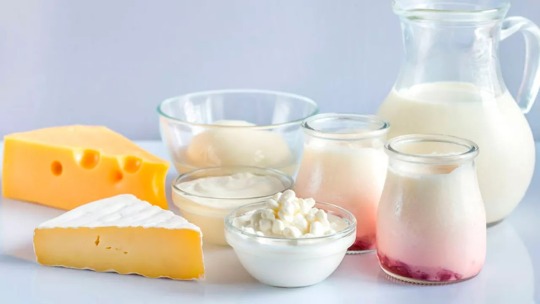#LactoseFreeTech
Explore tagged Tumblr posts
Text
Dairy Enzymes Market Accelerates with Growing Adoption in Innovative and Plant-Based Dairy Alternatives
The global dairy enzymes market is poised for sustained expansion, driven by rising consumer demand for health-conscious products, evolving dietary needs, and the ongoing quest for sustainable food processing methods. Enzymes such as lactase, protease, lipase, and transglutaminase play a pivotal role in modern dairy production, offering solutions that enhance functionality, improve nutrition, and align with clean-label trends. As the dairy industry continues to innovate, new opportunities are emerging across product development, regional expansion, and technological integration.

Rising Demand for Lactose-Free and Digestive-Friendly Products
One of the most significant market opportunities lies in the growing demand for lactose-free and low-lactose dairy products. Lactose intolerance affects a substantial portion of the global population, especially in regions such as Asia-Pacific, Africa, and Latin America. This creates a strong market for dairy enzymes like lactase, which hydrolyzes lactose into more digestible sugars, enabling the production of lactose-free milk, yogurt, and cheese without compromising taste or nutritional value.
Brands that offer dairy products catering to lactose-intolerant consumers can access a wider customer base and meet growing health awareness trends. This has led to increased investments in high-performance lactase enzyme formulations designed for efficiency and stability in varied processing conditions.
Growth in Functional and Fortified Dairy Products
Health and wellness trends continue to shape the global food industry, and dairy products are no exception. Consumers are increasingly seeking foods that support digestive health, immunity, and overall wellness. Dairy enzymes offer a natural way to create fortified, high-protein, or probiotic-enriched dairy products that meet these needs.
Proteases, for example, are used to hydrolyze milk proteins to enhance digestibility, making dairy products suitable for aging populations and fitness-focused consumers. Transglutaminase helps improve the texture and stability of high-protein dairy formulations, particularly in beverages and yogurts. These enzymes allow manufacturers to create differentiated products that command premium pricing and consumer loyalty.
Expansion into Emerging Markets
Emerging economies represent a substantial opportunity for growth in the dairy enzymes sector. Countries in Asia-Pacific, Latin America, and the Middle East are experiencing rising urbanization, income growth, and a shift in dietary habits. The adoption of Western-style dairy products such as cheese, yogurt, and flavored milk is increasing, driving the need for efficient and scalable production methods.
Enzyme technologies help local dairy processors improve yield, consistency, and shelf life critical factors in markets with developing cold chain infrastructure. Enzyme manufacturers that can tailor their offerings to regional needs and provide technical support to local processors will be well-positioned for success.
Plant-Based and Alternative Dairy Products
As the market for plant-based alternatives continues to grow, enzymes are also finding applications in non-dairy products. While traditionally used in animal milk-based systems, enzymes like proteases and amylases are now being explored to enhance the texture, flavor, and protein content of plant-based milk, yogurt, and cheese alternatives.
This crossover application presents a new frontier for enzyme manufacturers, as more consumers seek flexitarian or vegan diets without sacrificing taste or nutrition. Developing enzyme solutions compatible with soy, almond, oat, or pea-based dairy alternatives is a rapidly expanding opportunity area.
Sustainability and Clean-Label Production
Sustainability is a rising priority for both manufacturers and consumers. Enzymes contribute to greener production methods by reducing energy consumption, minimizing waste, and improving resource efficiency. For instance, lipase enzymes can enhance flavor development in cheese, reducing the need for artificial additives. Enzyme-based processes also reduce reliance on chemical treatments, supporting clean-label initiatives and regulatory compliance.
As more brands commit to environmental, social, and governance (ESG) goals, enzyme suppliers that can demonstrate the sustainability benefits of their solutions will gain a competitive advantage.
Conclusion
The dairy enzymes market presents multiple avenues for growth and innovation. From addressing lactose intolerance and enhancing nutritional value to enabling plant-based product development and supporting sustainable production, enzymes are at the center of the modern dairy industry’s evolution. Companies that invest in enzyme technology, adapt to regional needs, and align with health and sustainability trends will be well-positioned to capitalize on the opportunities that this dynamic market continues to offer.
0 notes